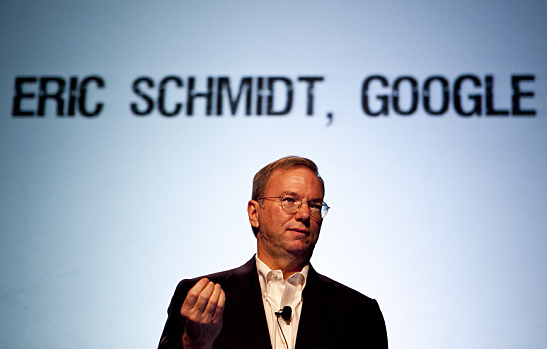The battle between Android and iOS continues following the publication of Google Chairman Eric Schmidt’s four-step guide for iPhone users switching to Android on his public Google+ account. The guide includes all the steps to sync a new Android phone with the existing contacts, email accounts, photos, and music on your iPhone.
Schmidt posted the guide on November 24, explaining that many of his iPhone friends are converting to Android. He praised the Samsung Galaxy S4, Motorola Verizon Droid Ultra, and the Nexus 5 for being faster, having better screens and more intuitive interfaces than Apple’s competitor. “They are a great Christmas present to an iPhone user!” Schmidt says.
The guide also includes general advice to use Chrome instead of Safari, and to use the two-step verification for Gmail and Google accounts to significantly reduce security risks. Schmidt’s post is a reflection of Android’s continued market share increase over iOS.
International Data Corporation (IDC) reported that Android now holds 81 percent market share of mobile operating systems as of Q3 2013. Apple is at a distant second with just under 13 percent. Of course, that may not be the company’s top priority, considering they are in the business of selling premium hardware devices, not operating systems on multiple low-cost devices, as Forbes points out.
Still, market share does play a significant role in the success of Apple and Google alike. What will Apple do to slow their market share decline and combat with Android? In an interview with Businessweek, Apple CEO Tim Cook explains that he doesn’t measure success in unit market share, but in usage statistics. “We really want to enrich people’s lives, and you can’t enrich somebody’s life if the product is in the drawer.”
According to NetMarketShare, a web analytics company, over 55 percent of all mobile Web activity comes from a device using iOS. By comparison, only 30 percent is coming from an Android device. But usage does not signify market share, and there are still more people buying Android phones than iPhones.
Many investors were hoping that Apple’s release of the iPhone 5c was going to compete with the low-cost devices that are increasing Android’s market share, but the 5c is still a premium-priced device at $549 wholesale. Current iPhone users may love their phones and use them more than Android users, but how will Apple attract new users and prevent current ones from switching to Android?
Photo courtesy of Flickr
[cf]skyword_tracking_tag[/cf]

